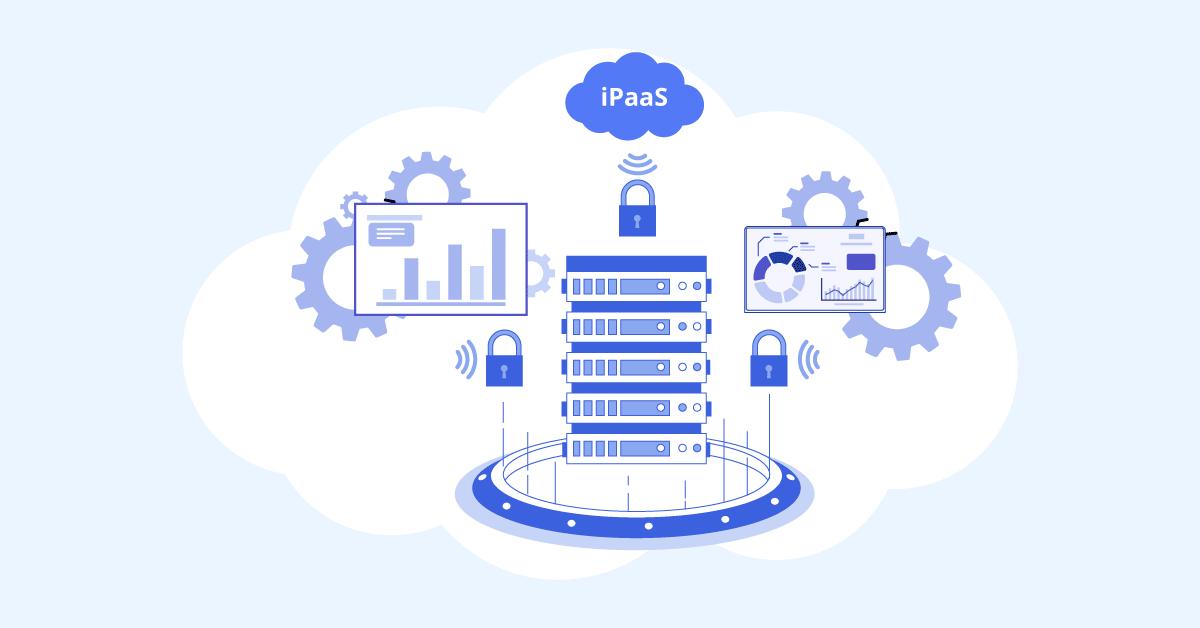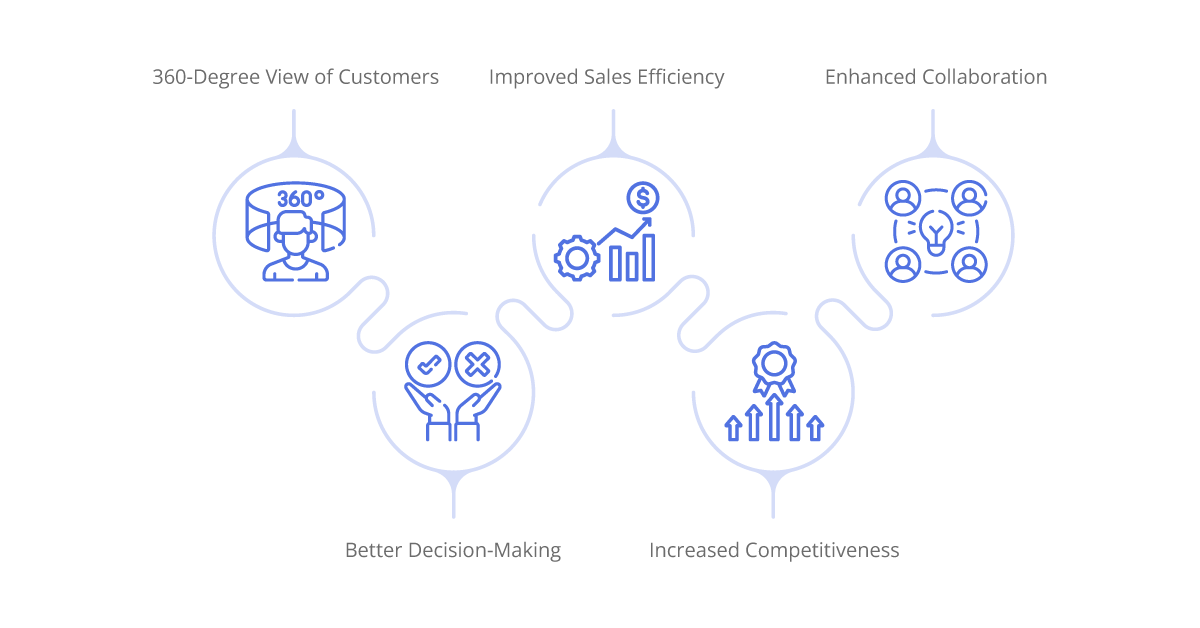Modern businesses are built on data. From customer information to sales figures, data drives decision-making and strategy. However, as businesses grow, data often becomes scattered across various systems and platforms, leading to data silos. These data silos can hinder efficiency, collaboration, and ultimately, profitability. In the realm of sales systems, data silos pose a significant challenge, making it difficult for sales teams to access accurate and up-to-date information when they need it most. In this blog, we’ll explore the concept of data silos in sales systems and delve into how Integration Platform as a Service (iPaaS) solutions offer a powerful antidote to this common problem.
Aonflow iPaaS – Free for First 3 Months!
Build and run up to 1,500 transactions monthly with no cost. No payment info needed!
Understanding Data Silos
Data silos, as the term implies, are like isolated vaults within an organization where valuable data is locked away, unable to communicate with or benefit other parts of the company. In the realm of sales systems, these silos often emerge from the use of different software applications for various tasks. Picture this: sales representatives using one system to manage potential leads and another to track customer interactions and yet another for inventory management. Each of these systems is like a separate fortress, holding onto its data tightly, without much regard for the bigger picture.
This fragmented approach to data management can lead to a host of problems. For instance, sales reps might struggle to piece together a complete picture of a customer’s journey because essential information is spread across multiple systems. They might waste valuable time navigating between different applications, searching for bits of data scattered across the digital landscape. As a result, opportunities might slip through the cracks, and valuable insights might remain buried beneath layers of digital clutter.
Consider the scenario where a sales rep, let’s call her Sarah, is following up with a potential lead. She logs into her CRM system to check the lead’s contact information and previous interactions. However, to get a better understanding of the lead’s preferences and purchasing history, she needs to switch to a different system. Now, imagine if all this information were seamlessly integrated into a single platform. Sarah could access everything she needs with just a few clicks, saving time and frustration.
Furthermore, data silos can impede collaboration and teamwork within the sales department. When crucial information is locked away in separate systems, it becomes challenging for team members to share insights, coordinate efforts, and align their strategies. This lack of cohesion can result in duplicated efforts, conflicting messaging, and missed opportunities.
Moreover, data silos can hinder decision-making at every level of the organization. Without access to a comprehensive and accurate view of sales data, managers may struggle to identify trends, track performance, and forecast future revenue. This can lead to reactive decision-making based on incomplete or outdated information rather than proactive strategies informed by robust data analysis.
The Impact of Data Silos on Sales Operations
The repercussions of data silos extend like ripples across the pond, affecting every facet of sales operations with tangible consequences. Firstly, they act as an opaque barrier obscuring the sales pipeline from view. Imagine trying to navigate a maze blindfolded—it’s akin to the challenge faced by sales managers attempting to forecast revenue and pinpoint bottlenecks within the sales process when vital data is cloistered away in disparate silos. Without a clear view of the pipeline, sales managers are left groping in the dark, unable to make informed decisions or implement strategic interventions to optimize performance.
Secondly, data silos erect walls between members of the sales team, inhibiting collaboration and synergy. In an ideal sales environment, team members seamlessly share insights, pool resources, and coordinate efforts to achieve common goals. However, when essential information is locked away in isolated silos, collaboration becomes an uphill battle.
Picture a team of climbers attempting to scale a mountain, each armed with only a fragment of the map—they may expend unnecessary energy retracing each other’s steps, missing crucial shortcuts, and ultimately failing to reach the summit. In a sales context, this lack of collaboration results in duplicated efforts, missed opportunities, and a disjointed customer experience that erodes trust and undermines brand loyalty.
Finally, data silos cast a shadow over data-driven decision-making, the cornerstone of successful sales strategies. Without access to a unified pool of data, sales leaders are forced to rely on fragmented insights and incomplete information to formulate their strategies. It’s akin to trying to solve a jigsaw puzzle with half the pieces missing—no matter how adept the strategist, the resulting picture will be incomplete and potentially misleading. Consequently, sales leaders may find themselves making decisions based on intuition rather than evidence, leaving their organizations vulnerable to missed opportunities and strategic missteps.
Challenges in Integrating Sales Systems
Integrating disparate sales systems is akin to solving a complex puzzle, with each piece presenting its own unique challenges and intricacies. Firstly, navigating the labyrinth of legacy systems can feel like traversing a maze without a map. Many of these older systems were not designed with integration in mind, lacking the built-in capabilities to seamlessly communicate with other platforms. As a result, integrating these legacy systems often requires manual intervention, with data entry and export/import processes becoming a laborious bottleneck in the integration workflow. It’s akin to trying to merge two rivers flowing in opposite directions—possible, but not without significant effort and resource investment.
Furthermore, the landscape of sales systems resembles a patchwork quilt, with each system employing its own set of data formats and schemas. Attempting to reconcile these disparate formats can feel like trying to fit a square peg into a round hole—it’s inherently incompatible and fraught with challenges. Without a common language to facilitate communication between systems, integration efforts can quickly devolve into a tangled mess of incompatible data streams and missed connections.
Moreover, even if the technical hurdles of integration are overcome, ensuring data accuracy and consistency across integrated systems remains a Herculean task. Picture a game of telephone played across multiple platforms—each transmission introduces the potential for errors and discrepancies to creep into the data stream. Without robust mechanisms in place to validate and reconcile data across systems, the risk of erroneous reporting and misguided business decisions looms large, casting a shadow of uncertainty over the entire integration process.
iPaaS Solutions
iPaaS solutions represent a paradigm shift in how organizations approach data integration and connectivity. At their core, iPaaS platforms serve as the linchpin of a unified digital ecosystem, providing a centralized hub where disparate applications, databases, and systems converge to form a cohesive whole. Picture a bustling city center, with iPaaS at its heart, serving as the nexus where roads, railways, and airways converge to facilitate seamless movement and communication.
One of the key strengths of iPaaS solutions lies in their extensive repertoire of pre-built connectors and APIs. These connectors act as the digital bridges that span the chasm between different systems, enabling data to flow freely and effortlessly across organizational boundaries. It’s akin to a network of highways crisscrossing the countryside, connecting remote towns and villages to the bustling metropolis at the center. With iPaaS, organizations can leverage these pre-built connectors to establish seamless communication channels between disparate systems, eliminating the need for costly and time-consuming custom integrations.
Moreover, iPaaS solutions offer a wealth of tools and features designed to streamline the integration process from end to end. From data mapping and transformation to workflow automation and orchestration, iPaaS platforms like Aonflow provide a comprehensive toolkit that empowers organizations to tackle even the most complex integration challenges with ease. Imagine a master craftsman with a well-stocked toolbox, equipped with everything needed to tackle any job with precision and efficiency—that’s the power of iPaaS.
Furthermore, iPaaS solutions are inherently scalable and flexible, capable of adapting to the evolving needs of the organization over time. Whether adding new systems, expanding into new markets, or integrating with third-party applications, iPaaS platforms can accommodate growth and change without missing a beat. It’s akin to a resilient ecosystem that evolves and adapts in response to changing environmental conditions, ensuring long-term viability and sustainability.
Aonflow is the leading integration platform.
You can kick-start by integrating your first-ever workflow in just a matter of minutes.
Key Features of iPaaS Solutions
- Connectivity: iPaaS solutions support a wide range of connectors for popular sales systems, including CRMs, ERPs, marketing automation platforms, and more. This broad connectivity ensures that all relevant data sources can be easily integrated into a unified ecosystem.
Data Transformation: iPaaS platforms facilitate data transformation and mapping, allowing organizations to harmonize data structures and formats across integrated systems. This capability is essential for ensuring data consistency and accuracy throughout the integration process. - Workflow Automation: iPaaS solutions enable the automation of repetitive tasks and processes, such as data synchronization, data migration, and workflow orchestration. By automating these tasks, organizations can reduce manual effort, minimize errors, and improve operational efficiency.
- Real-time Integration: Many iPaaS platforms offer real-time data integration capabilities, ensuring that sales teams have access to the most up-to-date information at all times. Real-time integration enables faster decision-making and enhances the agility of sales operations.
- Scalability and Flexibility: iPaaS solutions are inherently scalable and flexible, allowing organizations to adapt to changing business requirements and evolving technology landscapes. Whether adding new systems, expanding to new markets, or integrating with third-party applications, iPaaS platforms can accommodate growth and change with ease.
Benefits of iPaaS for Sales Systems
- 360-Degree View of Customers: By integrating disparate sales systems, iPaaS solutions provide a holistic view of customer data, including contact information, purchase history, communication logs, and more. This comprehensive view enables sales teams to better understand customer needs and preferences, resulting in more personalized interactions and higher customer satisfaction.
- Improved Sales Efficiency: iPaaS platforms streamline sales processes by automating data entry, eliminating manual tasks, and ensuring data consistency across systems. This increased efficiency enables sales reps to focus on selling rather than administrative work, leading to higher productivity and faster deal closure.
- Enhanced Collaboration: With integrated sales systems, sales teams can collaborate more effectively by sharing real-time information and insights. Whether coordinating on leads, collaborating on deals, or sharing best practices, integrated sales systems facilitate seamless collaboration among team members, regardless of location or department.
- Better Decision-Making: By providing access to timely and accurate data, iPaaS solutions empower sales leaders to make informed decisions based on comprehensive insights. Whether analyzing sales performance, forecasting revenue, or identifying trends, integrated sales systems enable data-driven decision-making that drives business success.
- Increased Competitiveness: In today’s fast-paced business environment, agility is key to staying ahead of the competition. iPaaS solutions enable organizations to adapt quickly to changing market conditions, customer demands, and competitive pressures. By leveraging integrated sales systems, businesses can enhance their agility and responsiveness, gaining a competitive edge in the marketplace.
Case Study: XYZ Corporation
Let’s dive into a use case looking at a fictitious XYZ Corporation, a global leader in the manufacturing industry, to illustrate the transformative impact of iPaaS solutions in tackling data silos within their sales systems.
Before embracing iPaaS, XYZ Corporation grappled with a myriad of challenges stemming from fragmented data across their sales systems. With operations spanning multiple regions and product lines, the company relied on a patchwork of legacy systems and disparate applications to manage sales processes, customer interactions, and inventory tracking. Each department operated in isolation, with valuable data locked away in silos, hindering visibility, collaboration, and decision-making.
Recognizing the need for a holistic solution to break down these data silos and streamline their sales operations, XYZ Corporation turned to iPaaS. By implementing an iPaaS platform, XYZ Corporation gained a centralized hub for integrating their diverse sales systems, connecting CRM, ERP, inventory management, and e-commerce platforms into a unified ecosystem.
The impact was immediate and profound. With iPaaS, XYZ Corporation gained a comprehensive view of their sales pipeline, enabling sales managers to track performance, forecast revenue, and identify bottlenecks with unprecedented clarity. By breaking down data silos and facilitating seamless data flow between systems, iPaaS empowered sales teams to access real-time information, collaborate more effectively, and deliver a superior customer experience.
Moreover, iPaaS enabled XYZ Corporation to automate manual tasks and streamline workflows, freeing up valuable time and resources for strategic initiatives. With automated data synchronization and workflow orchestration, sales teams could focus on value-added activities such as prospecting, lead nurturing, and customer engagement, driving productivity and efficiency across the organization.
Furthermore, iPaaS provided scalability and flexibility to accommodate XYZ Corporation’s evolving business needs. Whether expanding into new markets, integrating with third-party applications, or adopting new technologies, iPaaS offered a future-proof solution that could grow and adapt alongside the organization.
Conclusion
Data silos pose a significant challenge for sales operations, hindering visibility, collaboration, and decision-making. However, iPaaS solutions offer a powerful antidote to this common problem, providing the connectivity, automation, and flexibility needed to integrate disparate sales systems effectively.
By leveraging iPaaS platforms, organizations can break down data silos, gain a holistic view of customer data, and drive sales success in today’s competitive marketplace.
Aonflow iPaaS – Free for First 3 Months!
Build and run up to 1,500 transactions monthly with no cost. No payment info needed!


